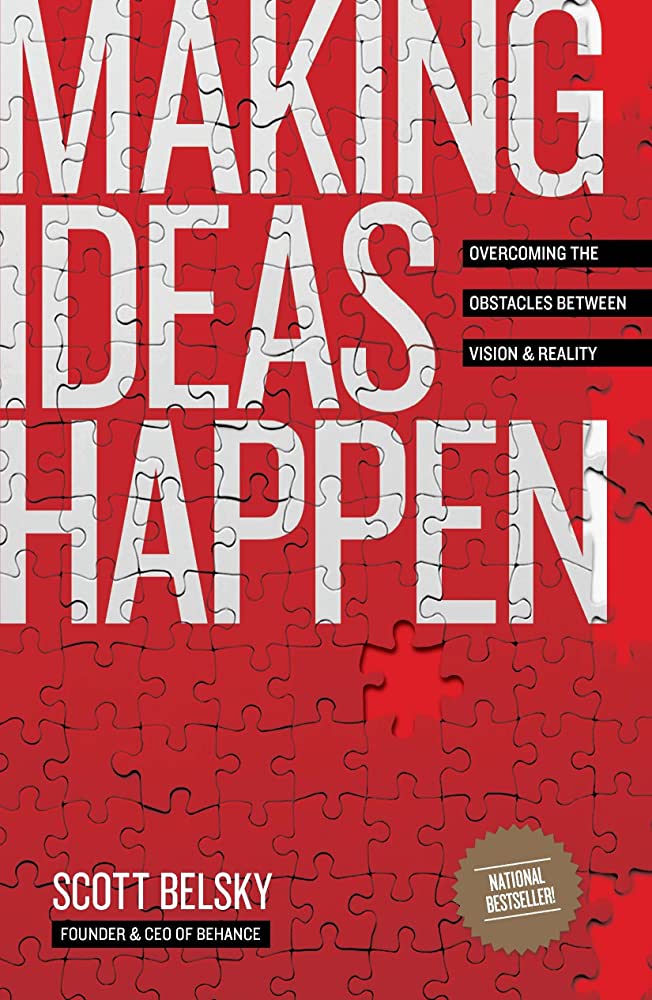Bias for Action
“Have a bias toward action—let’s see something happen now. You can break that big plan into small steps and take the first step right away.” —Indira Gandhi
Management guru Tom Peters on Bias for Action. “Whoever tries the most things wins.” 5 min.
Seth Godin calls on us to fight the resistance by “shipping,” putting our work out into the world and pushing the send button. Do it often, even if it’s not perfect. Have a deadline and meet it.
Relentless Bias for Action
Prioritize action over inaction and avoid analysis paralysis. It’s being proactive and agile in responding to challenges or opportunities. This can help people and groups overcome procrastination and move quickly.
The phrase “bias for action” from India’s first and only female prime minister has become a mantra for many social entrepreneurs and activists. Author and entrepreneur Scott Belsky adds “relentless.” It’s a reminder that it’s the daily grind toward the big idea that counts, the steady accomplishing. You see that in the life of anyone who’s done anything important. Successful innovation is less about having good ideas than it is about showing up every day, plugging away, and making it happen.
If we’re passionate about a cause, what keeps us from success? Marketing guru Seth Godin says it’s resistance. We have to overcome the resistance of our prehistoric brain stem, our “lizard brain,” that is “responsible for revenge, fear, and anger.” Because our lizard brain is afraid of failure and wants to remain unnoticed, it hates creativity.
The resistance leads people to make suggestions that slow you down, suggestions that water down your idea, suggestions that lead to compromises that lead to design death…. It’s that little voice in the back of your head, the “but” or the “what if” that speaks up at the crucial moment and defeats the joy and insight you brought to the project in the first place. It’s the lizard that ruins your career, stunts your projects, and hinders your organization.
Godin calls on us to fight the resistance by “shipping,” putting your work out into the world and pushing the send button. Do it often, even if it’s not perfect. Have a deadline and meet it. “If you and your organization are the ones (the only ones) that can get things done, close the sale, ship the product and make a difference, you’re the linchpins—the ones we can’t live without.”
If you watch documentaries about world-changers you only get hints of their real work and struggles, but when you’re around them in the real world what you see mostly is the daily slog. It’s that hero’s daily bias towards action that leads to their achievements and makes their lives notable. What will ship this afternoon? What step can you check off by Friday? World change requires tenacity, often years or decades of it. “Show up, show up, show up, and after a while the muse shows up, too,” says author Isabel Allende. “If she doesn’t show up invited, eventually she just shows up.”
NPR’s Life Kit
How to Be More Decisive
This NPR podcast episode discusses the increasing problem of everyday indecisiveness among Americans. It offers strategies for making decisions more effectively, such as letting go of the idea of a perfect choice, limiting options to three to five choices, prioritizing decisions based on their importance, trusting oneself, relying on routines, and decluttering both physical and mental spaces to reduce decision-making stress.
Cultivate a bias for action mindset:
-
- Take small steps. You can’t wake up one day and decide to take action on every single decision in the next 24 hours. Instead, choose to take action on small items that have low risk.
- Become comfortable with risk. Taking action means that sometimes you don’t have all the answers and have to take a risk.
- Avoid distractions.
- Learn by doing.
In addition, you can surround yourself with others who share a bias for action mindset. Seek out colleagues or mentors who value taking action and can provide support and guidance in your own efforts to cultivate this approach.
Scott Belsky’s Making Ideas Happen expands out from Thomas Edison’s quote, “Genius is 1 percent inspiration and 99 percent perspiration.” It’s not so much coming up with the idea, but the follow-up that leads to success. Here’s Belsky’s Quick Primer:
- You have ideas that you want to make happen.
- You can develop the capacity to make ideas happen.
- Making ideas happen = Ideas + Organization + Communal forces + Leadership capability.
- Organization enables you to manage and ultimately execute your ideas.
- The forces of community are invaluable and readily available.
- Fruitful innovation requires a unique capacity to lead.
It is not naïve or a cliché to say that the creative mind holds the answers to all the world’s problems. It is merely a fact. And so you should balance your desire to use your creativity with a sense of responsibility.



